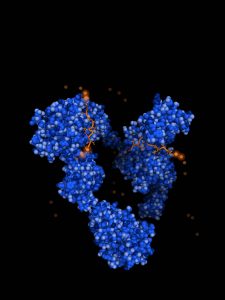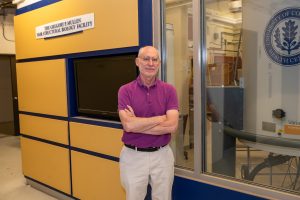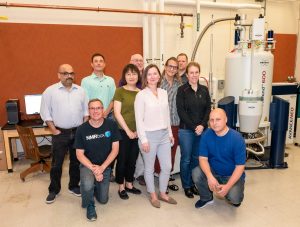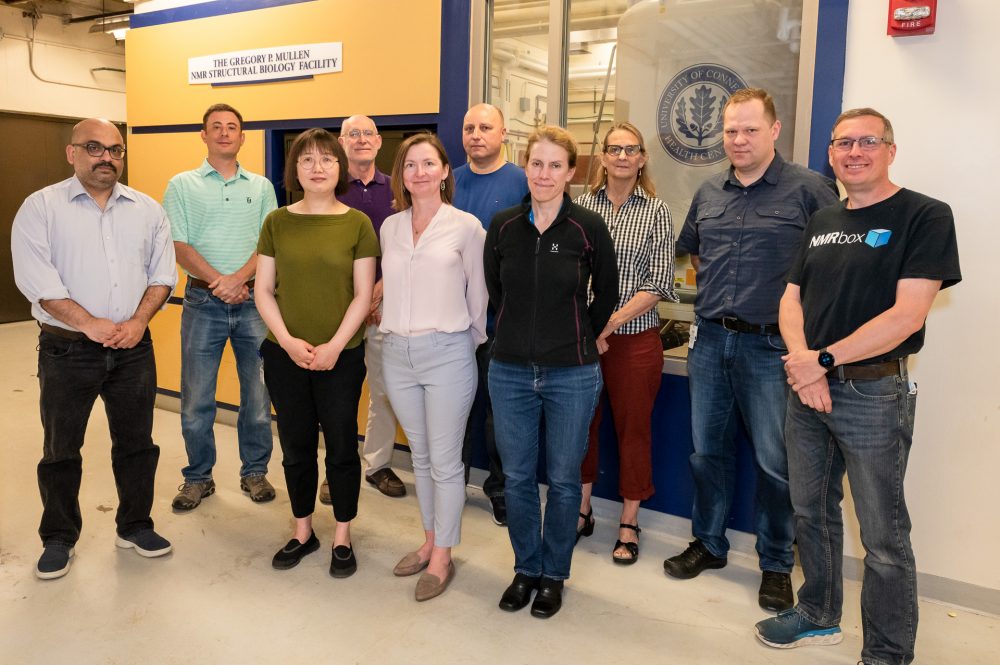The U.S. National Science Foundation (NSF) has awarded the University of Connecticut a $40 million research grant award, the largest in the University’s history, to UConn School of Medicine for further advancing molecular research nationally for chemistry, materials science, and bioscience.

This NSF grant will establish a new future distributed Network for Advanced NMR (NAN), led and based at UConn’s medical school in collaboration with the University of Georgia and the University of Wisconsin. NMR stands for nuclear magnetic resonance, a powerful method for analyzing molecules.
NAN has three main goals: to provide institutional researchers across the country with open access to the most powerful instruments; simplify the discovery and use of NMR resources; and foster good data stewardship. It will allow researchers across the U.S. to expand their own biomedical research study findings while also collectively contributing any new scientific insights to the evolving NAN knowledge bases.
Researchers will be able to visit or deliver their samples for analysis using state-of-the-art 1.1 GHz instruments located in Madison, Wisconsin and Athens, Georgia. Both instruments will be linked to a central hub based at UConn Health in Farmington that will assist discovery and scheduling, host knowledge bases with information on optimal experiment design, and securely archive the collected data.
“This new infrastructure, along with the network of scientists to support it, will advance research in biological sciences across the country through innovative experimentation and new biological insights,” says NSF Assistant Director for Biological Sciences Joanne Tornow.

The Network, led by UConn’s Jeffrey C. Hoch, Ph.D. of UConn School of Medicine, is a collaboration with co-principal investigators Art Edison from the University of Georgia, and Katherine Henzler-Wildman and Chad Rienstra from the University of Wisconsin.
“Thanks to NSF’s funding, our new Network will empower researchers to have open access to the latest advanced NMR technology with the necessary computational power to fuel future discoveries,” says Hoch, professor in the Department of Molecular Biology and Biophysics at UConn School of Medicine. “Any researcher nationwide with a laptop will be able to make use of these powerful NMR instruments, methods, and online data bank.”
“Our biggest hope is that NAN and advanced NMR technology’s expanded use will accelerate the identification of future disease biomarkers and ultimately improve the health and outcomes of patients everywhere, through future advances in diagnostics, drug discovery, treatments and especially much-needed cures,” says Hoch, who directs UConn’s Gregory P. Mullen NMR Structural Biology Facility, and is the director of NMRbox, an online NMR software resource platform.
UConn’s state-of-the-art Gregory P. Mullen NMR Structural Biology Facility rapidly processes the structures of large molecules, such as proteins, and their many components. While similar to magnetic resonance imaging (MRI), advanced NMR technology is even higher-powered and more sophisticated for molecular-level studies. The massive NMR spectrometers, machines used to examine structures, are 10 feet tall and weigh several tons. These spectrometers use extremely powerful magnets to examine biomolecular structure by placing the nucleus of an atom in a magnetic field. When exposed to the magnetic field and a pulse of radio-frequency energy, each part of a protein produces a specific frequency of radiation which scientists use to build a picture of the molecule.
“The University of Connecticut is extremely honored to receive recognition of our leading NMR research expertise from the National Science Foundation. We are so proud of Dr. Hoch’s incredible accomplishments. This new Network is a major solution and step toward incredible bioscience advancements for his research team, UConn and beyond,” says Dr. Andrew Agwunobi, Interim President of the University of Connecticut and CEO of UConn Health.
“The historic nature of this grant just goes to show that UConn, UConn Health, and the State of Connecticut are national research powerhouses with exceptional faculty who are academic leaders when it comes to groundbreaking innovation and discovery,” Governor Ned Lamont says.

“I am pleased to see that Dr. Hoch’s tireless effort and longstanding dedication to the field of NMR is eminently recognized by this amazing research grant award. With it, I know that Jeff and his team will continue to make major contributions,” says Dr. Bruce T. Liang, dean of UConn School of Medicine. “I would also like to thank UConn’s Office of the Vice President of Research and Dr. Radenka Maric whose support and leadership has been instrumental in this major grant award’s success.”
“Congratulations to Dr. Hoch and his team, UConn, and the Universities of Georgia and Wisconsin,” says Dr. Radenka Maric, VP for Research Innovation and Entrepreneurship at UConn and UConn Health. “There is no single catalog of the available shared NMR resources in the U.S. We know this Network will provide an effective national infrastructure solution to better serve the needs of our country’s scientists as a single resource for collaborative sharing of the extraordinary amount of information constantly being discovered about countless protein structures. NAN will bring the best and brightest together and help to diversify and grow the next generation of scientists.”
“UConn’s big idea is now a national reality and helpful resource thanks to the National Science Foundation’s generous and historic large-scale funding support of Dr. Hoch and his research team’s work that is surely at the frontier of science in the U.S.,” says Sanford Cloud Jr., chairman of the Board of Directors at UConn Health.
This grant award is part of NSF’s Mid-Scale Research Infrastructure II program, an NSF-wide effort to meet the research community’s needs for modern research infrastructure to support science and engineering research. More information about the Mid-Scale Research Infrastructure-2 program supporting the Network for Advanced NMR project can be found at nsf.gov.



